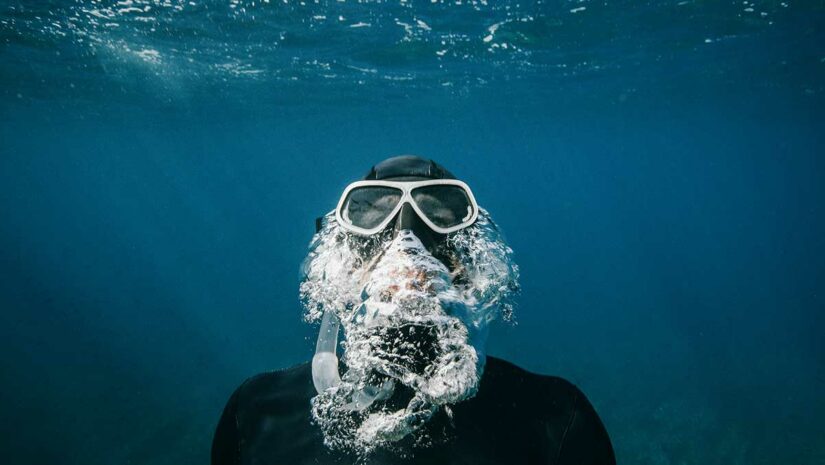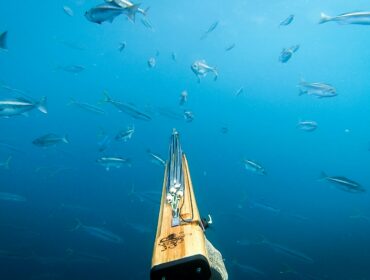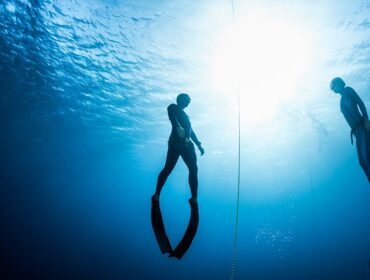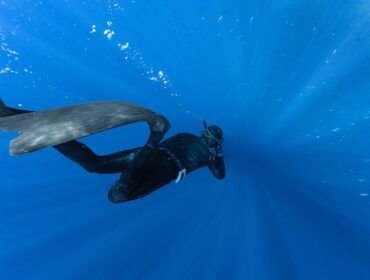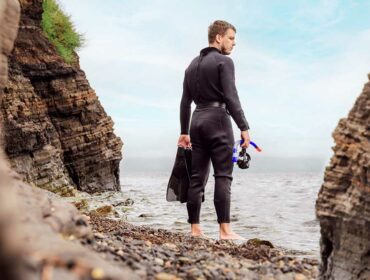Freediving is not just a sport; it’s a pursuit of harmony between the diver and the depths of the ocean. Central to this sublime experience is the freediving mask — a diver’s window to the vibrant world beneath the waves. A proper mask can mean the difference between a fleeting glimpse and a vivid encounter with marine life. It’s about more than just clear vision; it’s about comfort, safety, and the seamless integration of humans and habitats. Whether you’re gliding through a coral reef or exploring a sunken shipwreck, the right mask can transform your underwater journey.
In this blog, we’ll dive deep into the world of freediving masks. We’ll explore the nuances of low-volume designs, the clarity afforded by tempered glass versus plastic lenses, the hypoallergenic comfort of silicone skirts, and the necessity of UV protection. Each dive is unique, and so is each diver’s face; finding your ideal mask is an essential step in preparing for your aquatic odyssey. Let’s embark on this quest to find the best freediving mask for deep dives.
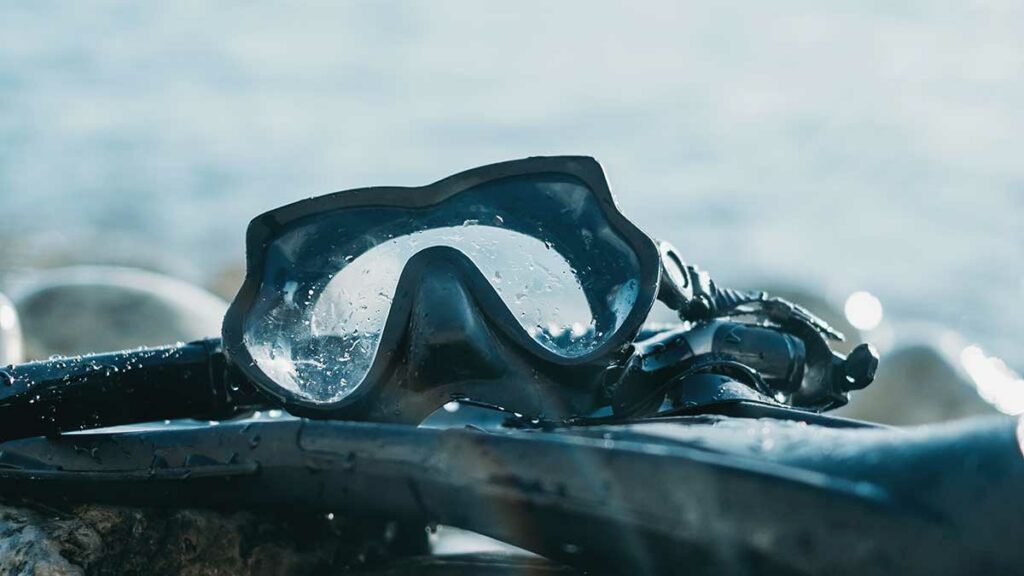
The Freediving Mask: Types and Features
Low Volume Design
A significant difference between freediving and scuba diving masks is mainly the low-volume design. A low-volume freediving mask has less air space between the face and the lenses. This design is crucial for several reasons.
First, it reduces the buoyancy of the mask, allowing freedivers to descend more easily without unnecessary buoyant resistance. Second, it minimizes the amount of air required from a freediver’s precious and limited supply to equalize the mask as they descend, where the pressure increases. Lastly, a low-volume mask is typically closer to the face, which provides a wider field of view, allowing freedivers to have better peripheral vision to appreciate the vastness of the underwater environment and to be more aware of their surroundings.
Tempered Glass vs Plastic Lenses
Today’s freediving masks come with an array of lens options designed to enhance underwater visibility.
Tempered glass is a popular choice due to its resistance to scratching and its ability to withstand pressure at depth. Some masks feature anti-reflective coatings to reduce glare and maximize light entry, which is crucial for the lower-light conditions found in deeper water.
Plastic lenses, while generally more affordable, are prone to scratching and can become cloudy over time, reducing visibility underwater. They are not as durable under pressure and can sometimes warp, affecting the diver’s view. However, they are lighter than glass and can be a good choice for casual snorkeling or for children’s masks where the depths explored are minimal.
Panoramic masks have extended side windows or a single lens design that offers a wider field of vision, suitable for those who prioritize sight over low volume.
Frame vs Frameless Masks
The debate between framed vs frameless freediving masks is often a matter of personal preference and comfort. Framed masks have a rigid structure holding the lenses in place, which can make them a bit more robust and potentially offer a more secure fit for various face shapes.
On the other hand, frameless masks are made by molding the silicone skirt directly onto the glass, resulting in a lighter mask with less rigid components. This not only contributes to a lower volume but also allows the mask to fold flat, a feature appreciated by freedivers who travel and need to save space in their gear bags.
Both types can provide excellent visibility and comfort, but trying them on is the only way to determine which style best suits your face and preferences.
Skirt Material: Silicone vs Rubber in a Freediving Mask
The skirt is the mask part that creates a seal against the diver’s face. Historically, skirts were made of rubber, but nowadays, silicone is the predominant material due to its superior flexibility, comfort, and longevity.
While rubber can still be found on some models and might be less expensive, it is generally stiffer and less comfortable, and it can irritate during longer periods of use. Rubber can also degrade more quickly, especially if exposed to UV light or improper maintenance.
The advantage of a silicone freediving mask is that it can provide a snug fit without exerting too much pressure, an essential feature to prevent mask squeeze during a deep dive. They also resist aging and degradation from the sun and saltwater far better than rubber. Additionally, silicone skirts often come in clear or various colors, with the choice often being a matter of personal preference; clear skirts allow for more light entry, potentially improving visibility, while colored or opaque skirts reduce glare and can help to improve focus by limiting distractions.
Anti-Fog Freediving Masks
One of the most common issues divers face is mask fogging, which can significantly hinder visibility underwater. Anti-fog technologies have been developed and integrated into freediving masks to combat this. Some masks come with a special anti-fog coating inside the lenses that prevents condensation from forming. Others feature designs that optimize airflow inside the mask to reduce the temperature differential that causes fogging.
Manufacturers also sometimes treat the glass during the production process to be more resistant to temperature changes, thus less likely to fog. This treatment is a molecular alteration of the glass surface, ensuring a longer-lasting solution than traditional anti-fog sprays or coatings, which can wear off over time and require reapplication.
UV Protection and Tinted Lenses
Exposure to ultraviolet (UV) rays concerns divers, especially in sunny conditions where the reflection off the water’s surface can be intense. Some modern freediving masks have built-in UV protection to shield the eyes from harmful rays. This is particularly important in shallow water freediving, where sunlight penetration is greatest.
Tinted lenses are another feature that can enhance the freediving experience. These lenses can reduce glare and improve contrast, making it easier to see in bright conditions. Amber or yellow-tinted lenses enhance contrast, while mirrored or blue lenses can help reduce surface glare. Divers must choose the tint that best suits the diving conditions they most frequently encounter.
Advanced Freediving Masks
Therapeutic Masks
A niche category, where masks may have features for hyperoxic training or other specialized functions. These masks often cover the eyes and ears, providing sensory deprivation that can help in managing stress and conserving oxygen.
Fluid Goggles Paired with Nose Clips
Fluid goggles paired with nose clips are specialized equipment for freedivers to enhance their underwater experience. The fluid goggles, filled with saline solution, allow for clear vision without the need for air space and, therefore, do not require equalization, unlike traditional masks. The nose clips are used to prevent water from entering the nasal passages and to help equalize ear pressure, allowing freedivers to descend to depths comfortably and efficiently.
Integrated Snorkel Masks
These are less common for deep freediving but may be used in snorkeling or surface swimming, as they cover the entire face and have a built-in snorkel.’These are less common for deep freediving but may be used in snorkeling or surface swimming, as they cover the entire face and have a built-in snorkel.
Professional Full-Face Masks
Occasionally used for specific types of freediving or by instructors, these provide a different experience and can sometimes be equipped with communication systems.
GoPro Compatible Masks
Some masks come with a mount on the frame to attach a GoPro or other action camera for divers who want to capture their underwater journey.
Hybrid Scuba and Freediving Masks
These masks bridge the gap between scuba and freediving, offering a balance between low volume and comfort for those who do both activities.
Photographic Masks
Some freediving masks come with color-correcting lenses to enhance underwater photography without the use of filters.
Camouflage Masks: Preferred by spearfishers, these masks blend in with the underwater environment to avoid startling fish.
See below for some of our top Freediving Masks from brands, including Salvimar and Seac.
How to choose a freediving mask
Face Shape Considerations
Choosing the right freediving mask starts with considering the shape of your face. A good mask should accommodate various facial features without causing discomfort. Divers with narrower faces should look for masks with a narrower skirt and frame, while those with wider faces might need a broader skirt and larger frame to ensure a proper seal. People with prominent foreheads or cheekbones need to pay special attention to the mask’s skirt design to ensure that it doesn’t apply too much pressure on these points.
Testing for Fit and Seal
To test the fit and seal of a mask, you don’t need to be in the water. Press the mask to your face without using the strap, and inhale through your nose. If the mask stays on without continuous inhaling, it’s likely a good fit. Make sure there are no gaps between your skin and the mask’s skirt and that there’s no uncomfortable pressure on your nose or forehead. Check that you can easily pinch your nose through the mask for equalization.
Personal Preferences in Style and Color
Personal preferences play a significant role in selecting a freediving mask. Beyond function and fit, the style and color of a mask can enhance the diving experience. Some divers might prefer a sleek, hydrodynamic design that minimizes drag, while others may prioritize a mask that allows for the attachment of action cameras. The color of the skirt and frame can range from classic black to vibrant hues; while black or darker skirts reduce glare and help the diver focus on the environment, transparent skirts can feel less claustrophobic by allowing more light in. Ultimately, the choice should balance personal style with the mask’s functional performance to ensure both comfort and confidence underwater.
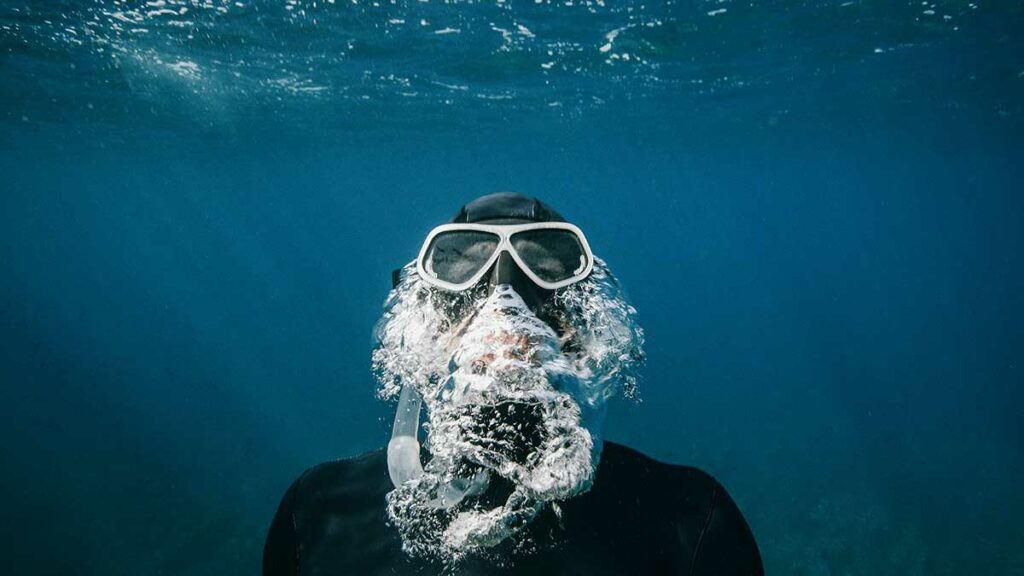
Freediving Masks Maintenance Tips
Maintaining your freediving gear is crucial for its longevity and ensuring it performs at its best every time you dive. Proper care involves regular cleaning, correct storage, and addressing common issues promptly. Here are some essential maintenance and care tips for your masks and snorkels:
Proper Cleaning of Masks
After each use, cleaning your mask with fresh water is important to remove salt, chlorine, and any organic material like sand or seaweed. Wash the skirt, straps, and frame gently but thoroughly. For the lenses, use a soft cloth or sponge to avoid scratches. Occasionally, a more thorough cleaning is necessary to remove buildup from the mask and snorkel. Use a mild soap or a specialized gear cleaner designed for dive equipment to wash each piece. For anti-fog coating masks, avoid using abrasive cleaners or cloths that can degrade the coating. Rinse everything thoroughly and allow it to air dry completely before storage.
Storage Tips to Prevent Damage
Proper storage is essential to preserve the condition of your freediving gear. Keep your mask out of direct sunlight when not in use, as UV rays can degrade the silicone and plastic over time. Store them in a cool, dry place away from heat sources, which can warp or melt the materials.
Ideally, the mask should be kept in a protective case to prevent the lenses from getting scratched and maintain the skirt’s shape. Avoid placing heavy objects on top of your gear, which can cause deformation and damage.
Common Issues and How to Fix Them
Freediving masks can encounter several common issues, but most can be fixed with simple solutions:
- Fogging: If your mask begins to fog despite having anti-fog features, ensure you are not touching the inside of the lens with your fingers, as oils can cause fogging. You can use anti-fog solutions or a small amount of baby shampoo rinsed out with seawater before a dive to prevent fogging temporarily.
- Leaks: For masks that start to leak, check the silicone skirt for any tears or deformities. Ensure the strap is not too tight, which can warp the skirt and cause leaks. Also, facial hair can prevent a proper seal, so you might need to shave or apply a silicone-based lubricant to create a better seal.
- Stiff or Cracked Skirt/Strap: Over time, exposure to the elements can cause the silicone to become stiff or crack. Keep your gear away from the sun when not in use, and regularly treat the silicone with a conditioner that’s safe for dive equipment to maintain its elasticity.
- Broken Buckles or Clips: These are usually replaceable. Check with the manufacturer for spare parts, often available for higher-quality gear.
Regular maintenance and addressing these common issues not only extend the life of your gear but also ensure that you have a safe and enjoyable freediving experience.
Conclusion
As we surface from the depths of all things related to freediving masks, it’s clear that the right choice can elevate your underwater experience from mere observation to a vivid and memorable engagement with the ocean’s mysteries. A well-fitted, properly maintained mask is a treasure in any freediver’s kit—serving as a reliable guardian of your vision and a silent companion on your aquatic quests. Whether you’re drawn to the minimalist design of low-volume masks or the panoramic vistas offered by wider lenses, remember that quality, comfort, and care are the pillars upon which your underwater clarity rests. So, take the plunge confidently, knowing you are well-equipped to face the wonders that await beneath the waves. With each dive, let your mask be the lens through which the ocean unveils its most intimate secrets to you.

